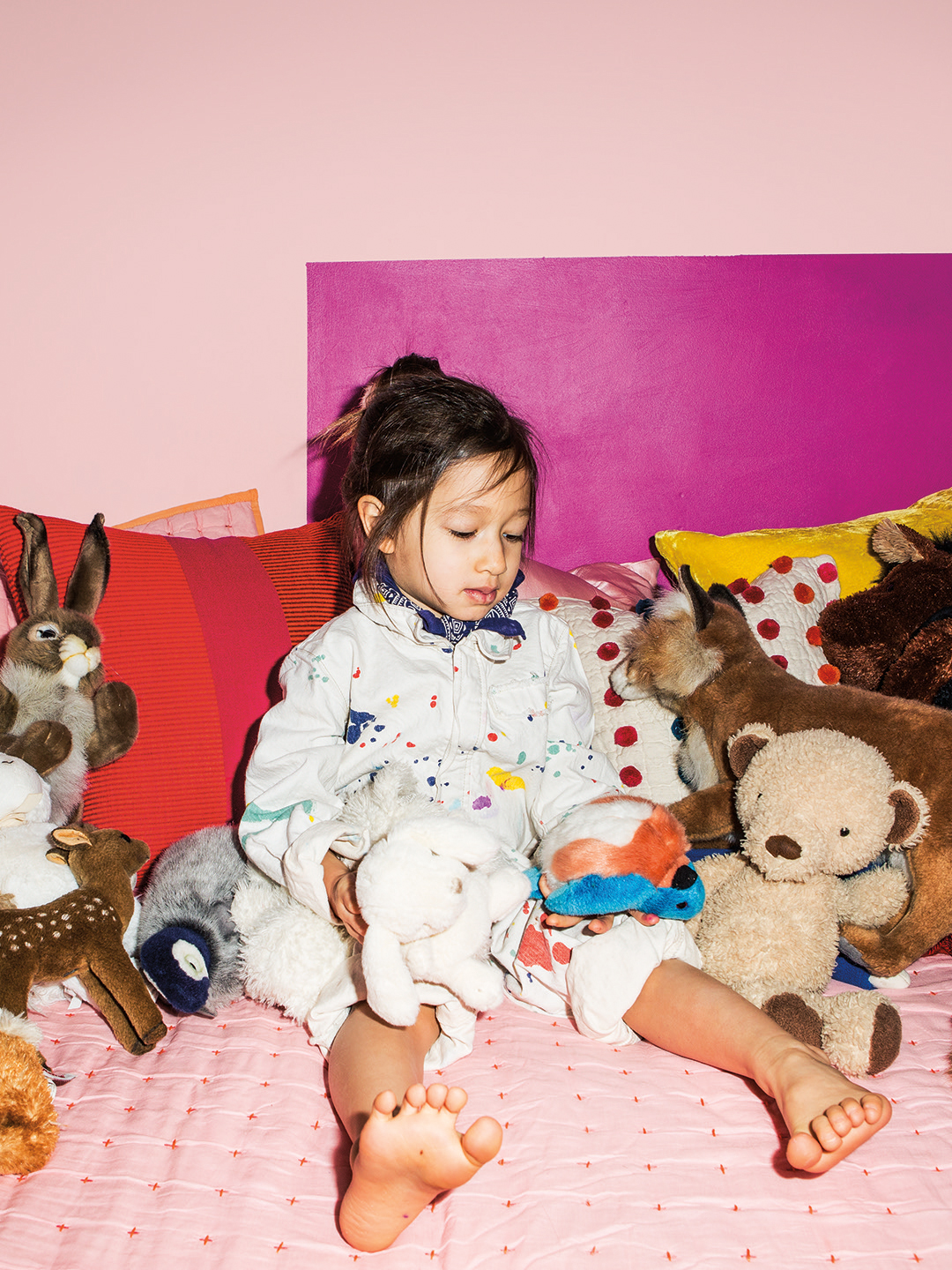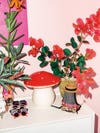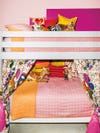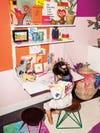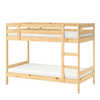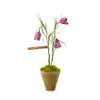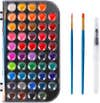How to Let Your 4-Year-Old Design Her Own Bedroom (and Like the Results)
When to compromise, and when to say “yes” to hot pink.
Updated Apr 5, 2024 5:49 PM
We may earn revenue from the products available on this page and participate in affiliate programs.
Quinn Berry wants to talk design. Or rather, as a 4-year-old whose aesthetic vision outpaces her vocabulary, she wants to draw it. When it came time to redecorate her bedroom at her family’s apartment in downtown Manhattan, Quinn uncapped her markers and sketched out her number one request: a bunk bed with a rainbow ladder. “It will be beautiful and curious!” she says with poetic brevity. Her developed sensibility is understandable, given that her parents are Domino style director Kate Berry and illustrator Ian Berry.
The first step to overhaul Quinn’s understated baby room—too quiet for a girl now finding her voice—was determining what would go. Out went the crib and the neutral, alphabet-embroidered textiles, while punkier accents, like a constellation of fringed pendant lamps by the creative studio Confetti System and a graphic Moroccan rug, proved their staying power. Then Quinn laid out her wishes for “hot pink walls with pretend flowers” and the aforementioned bed. With Domino style editor Elaina Sullivan acting as mediator, negotiations began. The walls were softened to pale rose, overlaid with color-blocked sections in Pop pink and orange. Flowers arrived via a hyper-stylized fabric by the Austrian Swedish designer Josef Frank (Kate’s pick), which Sullivan used to transform the bottom bunk into a theatrical—call it “curious”—hideaway.
More than the culmination of Quinn’s budding art direction, the room is also a working laboratory, complete with standing easel, wall-mounted crafts area, and dress-up station stocked with pastel mermaid wigs. “She’s taking inspiration from everywhere now—it’s totally mind-blowing,” Kate says, describing a recent fascination with Yayoi Kusama (those spots, that hair). A polka-dot accent just might be the next design addition.
Encouraging creativity doesn’t mean your kid runs the show. Here are ways to strike a balance and create a space you both can live with.
Find the Hot Spots
Ask which two or three elements of the room matter most, and consider these nonnegotiable—to a point. Granting a green light for, say, a canopy bed gives your child a sense of agency but also affords you some leverage to fine-tune the specifics. A bunk bed was high on Quinn’s wish list and low on Kate’s, so they settled on a built-to-last white model and dressed up the details, like adding the botanical Josef Frank fabric—a win-win.
Adapt the Vision
Not all questionable ideas are to be tossed out. Instead, treat them as a starting point, something to tone down, recast, or change in scale in a way that works for both of you. Here, in lieu of a wall-to-wall paint job, bright pink turned up in color-blocked panels and in a collection of handwoven Ethiopian pillows—accents, not oversaturation.
Follow Their Passions
The setup of a space should reflect how it will be used. Childhood is a time of growing (and waning) interests, so a room redo is a good time to nurture new pursuits. Quinn’s obsessed-over pink wig, once relegated to a bin, now has an accessible spot on a dress form; her guitar and microphone are primed for impromptu jam sessions; a designated worktable encourages come-and-go drawing. Let the habits inform the design and vice versa.
Quinn’s Picks
This story was originally published in our Spring 2017 issue with the headline “Small Person, Big Style.”
